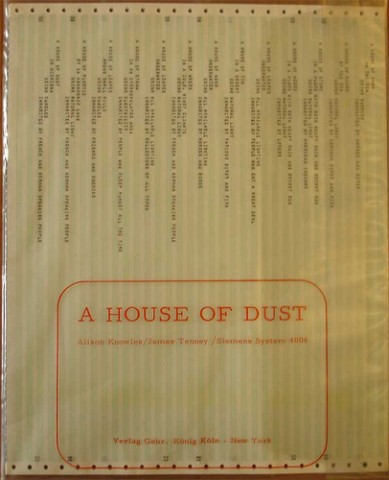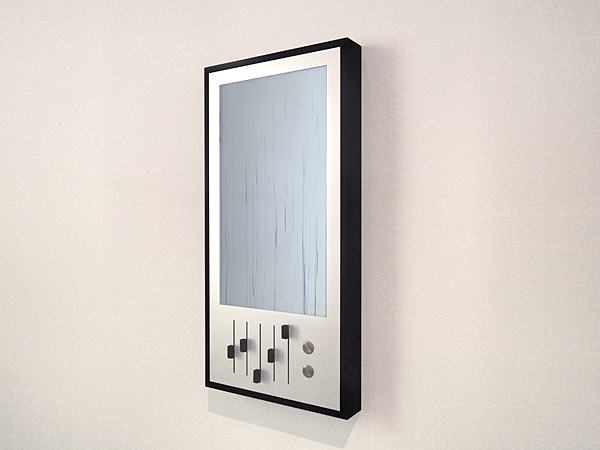GDB-LookingOutwards-3
A House of Dust – Alison Knowles and James Tenney (1967)
A house of dust
on open ground
lit by natural light
inhabited by friends and enemies
Knowles’ House of Dust is one of the first and, in my opinion, best forays into the art of generative poetry. It’s relatively simple, consisting of four-line stanzas (as above), each describing a house. Programmed on a Siemens 4004, the piece seems very lonely, distanced from all these houses and stories by the office paper and exact descriptions. It also does an excellent job of raising the simple question of what poetry is. Personally, I’m still uncertain whether this is poetry or not. For all its strength, it is quite primitive, and I’d like to see some more complexity in this kind of work, although it risks losing that distinctly robotic aspect. Knowles was a strong member of New York’s art community during the 60s, and was clearly influenced by the questioning approach to art that her peers, which included Marcel Duchamp and John Cage, took.
Rain – LIA (2012)
Rain is a surprisingly blunt piece of interactive art. It consists of a screen and a set of controls that dictate what kind of form is generated on said screen. Aside from the beauty of the made forms, I like this piece for its strange position as both art and tool. The contents of the screen can be printed, and these prints are sold as separate artworks. This makes the piece a fully realised tool for creative expression; it calls for both appreciation and mastery. I think it would be interesting to see this piece fused with a printer, creating one autonomous creative tool.
Light Echoes – Aaron Koblin and Ben Tickleback (2013)
Light Echoes from ben tricklebank on Vimeo.
Light Echoes is one of those technically wonderful pieces that seem to lack some conceptual direction. The piece is based on a projector mounted to a moving train, projecting onto the rails below. The footage of this is then composited into images with the full light coverage of the rails, which completely transform the space presented. As well as the aforementioned lack of focus I also have to say that I don’ve enjoy the editing style used for the documentation video.

